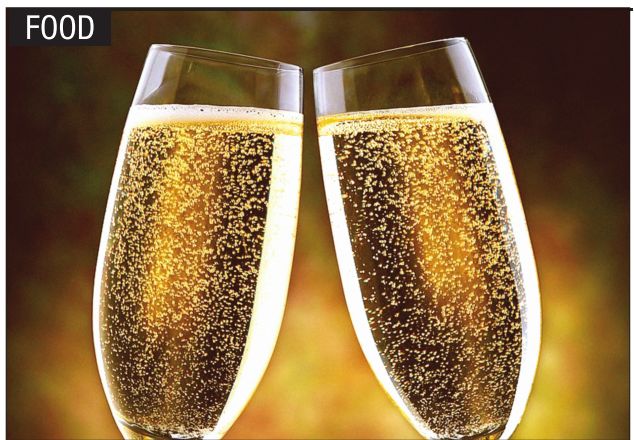
“Remember gentlemen, it’s not just France we are fighting for, it’s Champagne!” – Winston S. Churchill
Most New Year’s celebrations seem a bit awkward to me. The silly hats, noisemakers and excessive drinking just feel wrong, somehow. We had a party at my house every year when I was growing up. There was little alcohol but lots of food, always including my mom’s deviled hot dogs and Swedish meatballs. Everyone was boisterous and jolly, first watching the ball drop in Times Square on television, then counting down the minutes until it was midnight here, kissing and tooting horns. All I ever wanted to do – after I’d had my fill of deviled dogs and meatballs – was to creep off to my bedroom by myself, reflect about events of the past year, and think about what the next year would be like.
When my husband and I were college students and in the early years of our marriage, I had a picture in my head of a perfect New Year’s. We’d be alone in an isolated rustic cabin, with snow blanketing the ground and a beautiful starlit sky. There’d be a huge fireplace with crackling logs. We’d lie on a thick fluffy rug in front of the fire, plan for our future, and then . . . well, you get the idea. Unfortunately, that one remained a vision; we never found that cabin in the woods.
Since we’ve moved into our old farmhouse, some of our best New Years have centered on a huge bonfire. During the week between Christmas and New Year, we heap boxes, wrapping paper, fallen branches and sometimes even broken furniture into a huge pile that towers over our heads. At midnight we light the fire, warm ourselves by the blaze, and talk until the fire has burnt down to embers.
The one constant in almost all New Year’s scenarios is Champagne. Well, not necessarily “Champagne.” Strictly speaking, Champagne only comes from the Champagne region in northern France; the rest is sparkling wine. Legend has it that Champagne was discovered by Dom Pérignon, a blind monk who was cellar master in his monastery for 47 years until he died in 1715. “I’m drinking stars,” he’s reputed to have said. Modern wine historians, however, credit Dom Pérignon not with creating the bubbles but with finding a way to keep them in the bottle: the Champagne cork, which keeps the precious and pressurized contents from exploding.
Champagne from one of the top French producers is awesome: toasty, yeasty and elegant. It’s also expensive, something I rarely experience. Fortunately, there are lots of excellent sparkling wines from around the world that are delicious and much more affordable. Of course, there are the really cheap sparklers. The difference is in how they’re made. Making good sparkling wine is a tedious and difficult process – easily the most complex and timeconsuming in all winemaking. It involves rotating the bottles, secondary fermentation, and dégorgement – a process in which the neck of the bottle, which has been stored upside down, accruing sediment in the neck, is dipped in a frozen brine to create an icy plug of sediment that’s allowed to pop free of the bottle, after which the bottle is quickly recorked. These sparklers are labeled “méthode champenoise,” “fermented in the bottle,” or “traditional method.” There are reasonably decent bottles for between $10 and $20 – but from there the prices go up into the stratosphere. Many very good sparklers are made in the United States, some with prices to match their quality, but others are much more affordable. Many of the big French producers have also established wineries here, mostly in California. There’s even an excellent sparkling wine producer in New Mexico, Gruet. Many Spanish sparklers are delicious, as are Italian proseccos.
Those cheap sparklers – some almost as cheap as soda – are made through the Charmat bulk process and are so labeled. Fermentation is carried out in a series of tanks. Some aren’t bad for mixing, but, drunk by themselves, they’re thin and either sour or overly sweet and much more likely to give you a nasty headache the next day than those that are made traditionally.
Another important
component of drinking sparkling wine is the glass. I’m not sure how the
idea of saucer-shaped glasses got started. They look cool in old movies,
but no true wine lover would be caught dead drinking sparkling wine in
anything but a narrow flute or a tulip-shaped glass. The narrow glasses
keep the bubbles in (to which end the winemaker has expended much
effort), unlike those wide glasses, which let the bubbles escape.
However you like to celebrate the New Year, have a wonderful time, and stay safe.
Contact Julianne Glatz at [email protected].